Safe Techniques to Remove Water from Your Ear
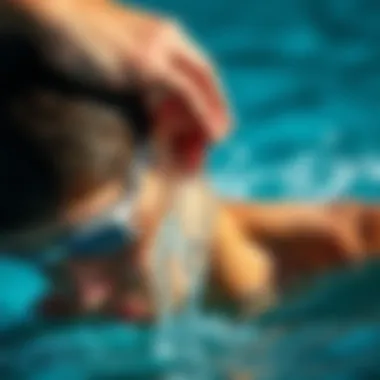
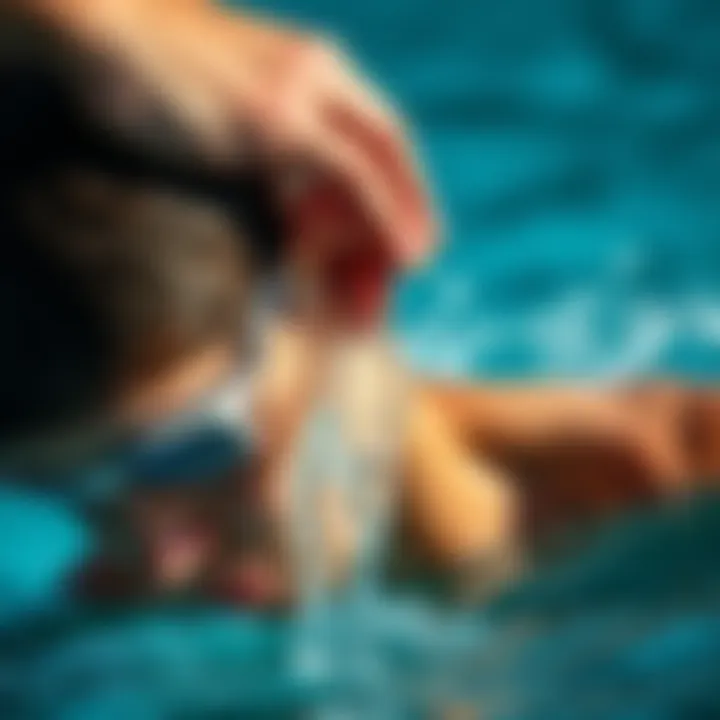
Intro
When you step out of the water, the refreshing rush of a good swim often comes with something less pleasant: that nagging feeling of water trapped in your ear. It’s not just an annoyance—it can lead to discomfort, dizziness, or even ear infections if left unchecked. For watersport enthusiasts, whether you’re surfing, sailing, snorkeling, or paddleboarding, knowing how to handle this common issue is crucial. This guide dives deep into methods for effectively clearing out that stubborn water, while also providing insights into preventive measures and when to seek professional help.
Water Activity Overview
Water activities offer thrill, relaxation, and a chance to connect with nature. Yet, they also come with unique challenges, including the risk of getting water stuck in your ears. Here's a quick glance at some popular water sports and how they relate to this often-overlooked problem.
Surfing
Surfing is exhilarating but can be a watery affair. When you wipe out, water can easily get trapped in your ears due to the waves crashing over you. It’s essential to know how to get it out before heading back for more.
Sailing
On the open sea, sailing is peaceful but can lead to water splashes that might sneak into your ears. Being aware of how to care for your hearing while enjoying the wind and waves is vital.
Snorkeling
With your head submerged for extended periods, snorkeling can lead to significant ear blockage. Proper techniques for clearing your ears should become second nature if you plan to explore marine life regularly.
Paddleboarding
Gaining popularity, paddleboarding provides a great workout and often requires some level of balance and movement. Falling into the water can happen, and it’s easy for water to lodge itself in your ear canals.
Tips and Techniques
Tips for Beginners
- Tilt Your Head: After swimming, tilt your head to the side and pull on your earlobe. This can help encourage water to drain.
- Yawn or Chew: These actions can help open the Eustachian tubes, allowing any trapped water to escape.
- Gravity: Lay on your side, with the affected ear facing down on a towel. Sometimes, time and gravity can do the trick.
Advanced Techniques for Experienced Enthusiasts
- Valsalva Maneuver: Pinch your nose and gently blow, forcing air into your middle ear, which may push out the trapped water.
- Use of a Hair Dryer: On a low heat setting, hold a hair dryer a foot away from your ear. The warm air can help evaporate the moisture, but be cautious not to burn yourself.
Safety Guidelines
- Always avoid using cotton swabs; they can push water further in.
- Consult a healthcare professional if pain or discomfort persists for more than a few days.
Gear Reviews
When enjoying water sports, the right gear can make all the difference in preventing water from getting in your ears in the first place. Here are some recommended products:
- Surfboards: A good surfboard, like the Foam Top by Wavestorm, can improve your balance and reduce wipeouts.
- Sailboats: Look for well-designed sailboats, such as Hunter 260, which add stability for a more enjoyable sailing experience.
- Snorkeling equipment: Invest in a quality mask with a good seal like the Cressi F1. It will help keep the water out while you explore.
- Paddleboards: The iRocker All Around is highly rated due to its stability and design.
- Wetsuits: A good wetsuit, like the O'Neill Psycho Tech, keeps you warm and can help reduce water entry during falls.
Finale
Understanding how to effectively remove water trapped in your ear can make a significant difference in your experience with water activities. By incorporating these methods and being proactive about prevention, you can enjoy your time on the water without the added discomfort of blocked ears. Remember, if issues persist or you feel unsure, consult with a healthcare professional. Keeping your ears healthy is as important as staying safe while you ride those waves.
"An ounce of prevention is worth a pound of cure."
For more resources related to ear care while enjoying water sports, you may find this article helpful or look through discussions on Reddit.
Understanding the Issue
When watersports enthusiasts take the plunge into their favorite activities, from surfing to snorkeling, the last thing they think about is the common nuisance of water getting trapped in the ear. While it may seem like a trivial issue at first glance, understanding the intricacies surrounding this concern can significantly enhance one’s enjoyment and health during and after aquatic endeavors.
The Anatomy of the Ear

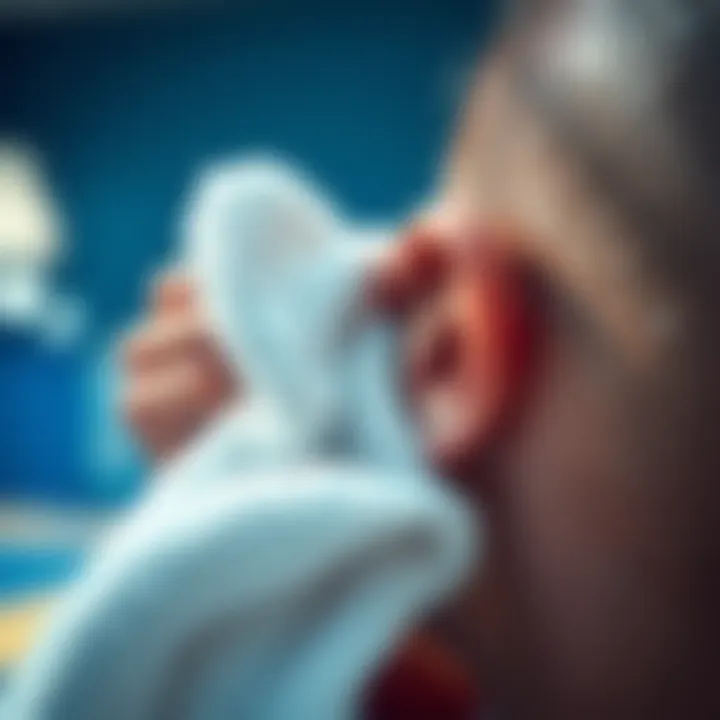
To comprehend how water gets lodged in the ear, it’s essential to first grasp its structure. The human ear is generally divided into three parts: the outer ear, middle ear, and inner ear.
- The outer ear comprises the collection of sound waves through the ear canal.
- The middle ear houses small bones called ossicles that help in amplifying sound.
- Finally, the inner ear, where the cochlea resides, is crucial for balance and hearing.
The space created between the tympanic membrane (eardrum) and the Eustachian tube is particularly noteworthy, as it can become a trap for water. This sound wave conduit is designed to function at equal pressure with the outer atmosphere, but when water infiltrates this space, it can lead to discomfort and even potential complications.
How Water Gets Trapped
Water typically finds its way into the ear during activities like swimming or showering. Here’s how:
- Water entry occurs when the ear is submerged.
- A vacuum effect may happen when sudden movements, like rapid ascents from the dive, create a pressure difference.
- At times, water can also sneak in while washing your hair or just from a heavy rainfall. This unexpected invasion can turn a fun time in the water into a frustrating situation.
Understanding these mechanisms sheds light on why trapped water is not just an irritation but also a problem that can lead to potential ear infections or other complications.
Symptoms of Water in the Ear
When it comes to detecting water trapped inside the ear, symptoms can range from benign to bothersome. Common indicators include:
- A full or clogged sensation in the ear
- An unusual degree of discomfort or itching
- Sounds becoming muffled or distorted
- In some cases, even a sense of dizziness or balance issues may manifest
The awareness of symptoms not only heightens one’s sense of precaution but also serves as an important alert to take action before more severe issues arise. If left untreated, lingering water in the ear might lead to infections that require medical intervention.
In concluding this segment, showing a solid understanding of the anatomy of the ear, the mechanisms of water entrapment, and the symptoms associated with that condition is invaluable. By doing so, you arm yourself with the knowledge necessary to tackle this pesky problem effectively.
Initial Steps to Take
When it comes to water getting stuck in the ear, the initial steps to take are crucial. Addressing the issue promptly not only enhances comfort but can also prevent potential complications, such as ear infections or other auditory issues. The goal is to act swiftly and efficiently to remove the trapped water, thus avoiding prolonged discomfort and distress. Skipping these preliminary techniques could lead individuals to resort to less effective or potentially harmful methods.
Tilt and Gravity Method
The Tilt and Gravity Method is the simplest yet surprisingly effective first step to take. This method relies on basic physics—using gravity to assist in dislodging the water. Here’s how it works:
- Find a comfortable position: Lean to the side where the affected ear faces downward.
- Tilt your head slightly: This helps to increase the angle at which gravity can work.
- Gently pull on your earlobe: This can help enlarge the ear canal, allowing the water to flow out.
This technique should be attempted before more involved methods, as it requires no tools and can be done anywhere. Many find this approach soothing, as it uses natural physiology without added pressure. If you don’t hear a satisfying pop, don’t fret; it’s just the first step.
Jaw Movements and Head Tilting
Next up, we have the Jaw Movements and Head Tilting strategy. This method can sometimes create enough pressure differences within the ear to shift any trapped water:
- Open and close your mouth: Just like how yawning or chewing can help equalize ear pressure, doing this can also mobilize any water trapped inside.
- Tilt your head: Combine this with gentle tilting of your head towards the affected side.
- Move your jaw in circles: Circular motions can stimulate the muscles surrounding the ear and jaw, potentially helping the water escape.
This approach isn’t just practical—it can be a bit fun too. It’s like performing little mouth acrobatics and might just coax that water out without extra fuss. If nothing happens after several tries, you might want to switch tactics.
The Vacuum Technique
The Vacuum Technique offers a more dynamic approach to expel water from the ear. It works by creating a temporary vacuum effect which encourages water to move out. Here is the way to do it:
- Create a seal: Place your hand over the affected ear and press gently, creating a seal.
- Open your mouth: With the seal intact, open and close your mouth to change the pressure.
- Remove your hand suddenly: Quickly pull away your hand. The sudden change in pressure may help to suck the water out of the ear canal.
This technique is a bit more advanced and requires some practice to perfect. However, when executed correctly, it can effectively resolve the issue. Remember, don’t overdo this—too much pressure can be counterproductive, and discomfort is a clear signal to stop.
These initial methods serve as effective first responses to alleviating the discomfort of trapped water. If the problem persists despite trying these remedies, it may be time to explore additional home remedies or consult a healthcare professional. Always keep in mind that prompt action can save you from further complications.
Home Remedies to Consider
Home remedies often provide effective solutions for removing water trapped in the ear. These methods can be particularly appealing to those who prefer to try at-home techniques before seeking professional help. Home remedies generally rely on items and techniques that are easily accessible, making them convenient for recreation enthusiasts. They not only serve the purpose of removing water but also emphasize comfort and safety. Knowing these remedies is essential, especially for those indulging in water sports, where encountering trapped water is quite commonplace.
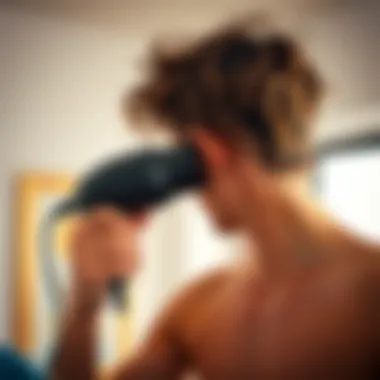
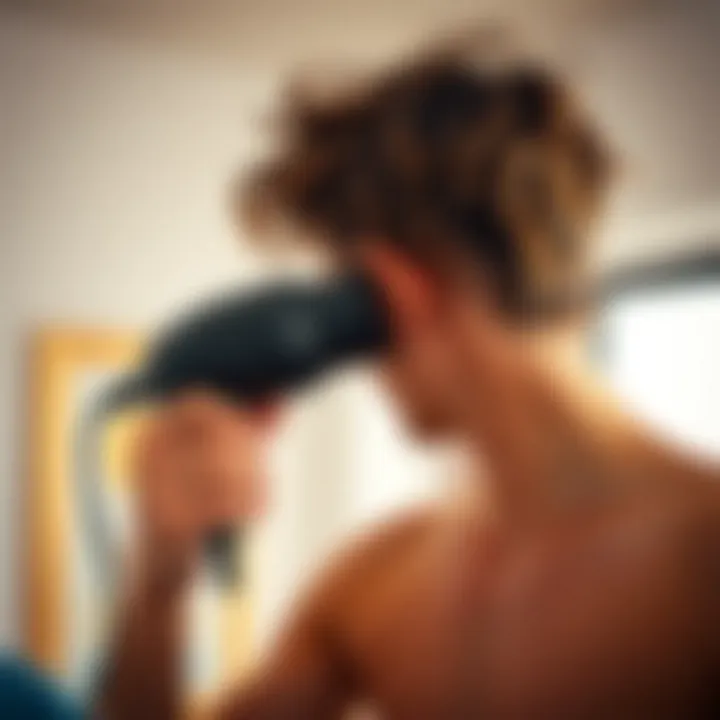
Using Heat for Extraction
Applying heat can assist in loosening up the moisture stuck inside the ear. The principle behind this method is simple: warm air helps evaporate the trapped water and create a more favorable environment for drainage. Here’s how you can use heat effectively:
- Warm Compress: Use a warm cloth or heating pad and place it against the ear for about 20 minutes. This gentle warmth helps to stimulate the eustachian tube and encourages drainage.
- Hair Dryer: Set a hair dryer on low heat and hold it at arm's length from your ear. Move it back and forth, allowing the warm air to circulate without risking burns. This method should be done cautiously, ensuring that it's not too close or too hot to avoid injury.
It’s important to note that while this technique can be beneficial, be sure to use it in a controlled manner. Excessive heat or direct contact might lead to burns or discomfort.
Alcohol and Vinegar Drops
A mixture of alcohol and vinegar has been a go-to recommendation in many household treatment strategies for trapped ear water. How does this work? The alcohol helps to evaporate any trapped liquid while the vinegar acts as an acid that can help prevent bacterial growth. You can prepare the mixture in this manner:
- Combine equal parts of white vinegar and isopropyl alcohol.
- Use a dropper to place a few drops into the affected ear while tilting the head to the side.
- Allow it to sit for about 30 seconds and then tilt your head in the opposite direction to let it drain out.
Always keep in mind that this method is not for everyone, particularly those with ear infections or a history of eardrum perforation, which makes consulting a healthcare provider critical.
Saline Solution Approach
The saline solution technique involves using a saltwater mix to help dislodge trapped water in the ear. This method has both cleansing and balancing properties that can be beneficial. To prepare and use it:
- Preparation: Mix a teaspoon of salt in half a cup of warm water until dissolved. Some folks even add a small amount of baking soda to the mix for additional effectiveness.
- Application: With a dropper, apply a few drops of this saline solution into the ear canal. Allow it to sit for a moment before tilting your head to let it drain.
Utilizing a saline solution can be particularly effective since it can help in breaking down stubborn moisture while also providing relief from irritation.
"It's important to approach home remedies with care. Results may vary, and when in doubt, seeking professional advice is always the best route to take."
In summary, these home remedies for trapped water can serve as a first line of defense against discomfort. They emphasize natural methods that often yield good results while promoting overall ear health. However, it's crucial to remember that not every remedy works for everyone. Individual experiences may vary, and awareness of personal health conditions should guide the choice of technique.
Professional Interventions
When it comes to removing water trapped in the ear, professional interventions can play a significant role. While many home remedies and techniques exist, there are instances where seeing a professional is necessary to ensure safety and effectiveness. This section will delve into when to consult a physician, the office procedures available for removal, and potential complications that might arise from improper methods.
When to Consult a Physician
If attempts to clear water from the ear have proven ineffective, it may be time to consider seeking medical advice. Some telltale signs indicate the need for professional intervention. If you experience any of the following, consulting a physician is prudent:
- Persistent discomfort or pain, even after trying home remedies.
- A noticeable change in hearing, such as muffled sounds or loss of hearing.
- Any signs of infection, including redness, swelling, discharge, or fever.
- Ringing in the ear, known as tinnitus, which can sometimes accompany fluid buildup.
Recognizing these symptoms early can save you from more severe issues down the line. As they say, better safe than sorry; initiated delays in seeking treatment can exacerbate potential complications.
Office Procedures for Removal
In a medical setting, physicians can employ various techniques for safely removing water trapped in the ear. Here are some common methods:
- Suction: A healthcare professional may use a specialized suction device to gently remove the fluid.
- Ear Canal Irrigation: This process involves using warm water or saline to flush out the trapped liquid, ensuring it drains effectively.
- Microscopic examination: Sometimes, the physician may need to use a microscope or an otoscope to examine the ear canal thoroughly and determine the best approach for removal.
Each method varies based on the situation, and the physician will choose one based on an individual patient's condition. It’s worth noting that these procedures are generally safe and performed in a sterile environment, reducing the risk of complications.
Potential Complications from Improper Removal
Improperly trying to remove trapped water can lead to various complications. For one, you might injure the delicate structures within the ear. Consider the following potential outcomes if one attempts haphazard methods:
- Ear Infection: Introducing bacteria or causing damage can lead to infections, which may require antibiotics for treatment.
- Eardrum Perforation: Forceful attempts to expel water can rupture the eardrum, leading to serious complications, including further hearing loss.
- Chronic Ear Problems: These may arise from repeated improper interventions, resulting in long-term discomfort or hearing issues.
In summary, while it might seem easy to deal with water trapped in the ear, understanding when it's time for professional help is crucial. The main objective should always be safety and preserving your hearing health. Engaging in informed decision-making is one of the best practices for any water sports enthusiasts.
Preventative Measures
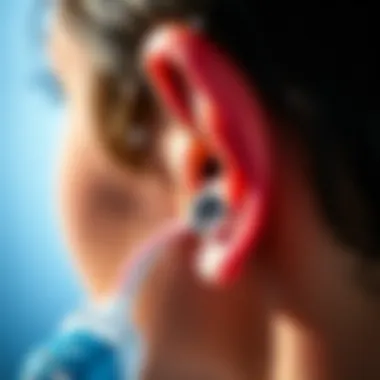

Water trapped in the ear can be a real bother, especially for those who love to dive or swim. Preventative measures serve as a first line of defense against discomfort and potential ear infections. By taking proactive steps, one can typically avoid the trap of water sitting stagnant in the ear canal. Let’s explore this in more detail.
Using Earplugs While Swimming
Investing in a good pair of earplugs is a small step that can yield significant results in preventing water from entering your ears. Specifically designed for swimming, these earplugs create a barrier, keeping the water out without causing discomfort.
- Why They Matter: When water enters the ear, it can lead to irritation or even infections, as bacteria can thrive in such moist environments. Earplugs minimize this risk.
- Types to Consider: Silicone earplugs provide a snug fit and are often reusable. There are also custom-molded options that can be specifically designed to match the shape of your ears, enhancing comfort while swimming.
Techniques for Preventing Water Entry
Using a few simple techniques while swimming can significantly reduce the chances of water getting trapped in your ears:
- Proper Swimming Techniques: Keep your head level in the water and avoid diving headfirst into shallow areas. This helps limit the amount of water that can enter your ears.
- Check Water Conditions: Be mindful of the swimming environment. Rough waves or strong currents can force water deeper into the ear canal, so avoid risky conditions when possible.
- Tilt Your Head: When you do get splashed, tilting your head to one side can help drain any water that might have entered.
Post-Water Activity Care
Even with the best preventative measures, water can still sometimes find its way into your ears. Here are ways to care for your ears right after your water activities:
- Drying Techniques: After swimming, dry your ears gently using a towel. Avoid sticking anything into your ear canal, as this could push water further in.
- Hydrogen Peroxide and Water: A mix of equal parts hydrogen peroxide and water can be used dropper in a few drops to help evaporate water in the ear.
- Observation: Keep an eye on symptoms. If you notice pain or prolonged discomfort, it might be time to consult a professional.
Remember: Taking these preventative steps isn’t just about comfort; it’s about safeguarding your ear health. Regular practices can build an effective habit that keeps troublesome water at bay.
Addressing Myths and Misconceptions
In the realm of ear health, especially when it comes to something as common as water trapped in the ear, a plethora of myths and misconceptions can cloud the true understanding of the issue. Addressing these misunderstandings is crucial, as it helps watersports enthusiasts not only to manage their ear health effectively but also to avoid unnecessary complications that may arise from following misguided advice.
One significant benefit of clarifying these myths lies in fostering informed decision-making. By debunking common falsehoods surrounding ear hygiene and moisture retention, individuals can adopt safer and more effective practices for managing their ear health. Furthermore, mistakenly believing in certain remedies might lead one to neglect sound medical advice or essential care practices that could have helped alleviate the issue sooner.
Additionally, addressing these misconceptions encourages better communication between healthcare providers and patients. When people are armed with correct information, they're more likely to articulate their concerns, leading to better diagnosis and treatment options. Overall, tackling these myths not only safeguards individual ear health but also promotes wider awareness and understanding around the topic.
Common Misbeliefs about Ear Hygiene
When it comes to ear maintenance, many people cling to outdated or completely inaccurate beliefs. For instance, a common misbelief is the notion that cleaning the ear with cotton swabs is an effective way to ensure hygiene. Quite the opposite is true; using cotton swabs can push wax further into the ear canal, leading to blockages and exacerbating the potential for water retention.
Another prevalent fallacy involves the idea that earwax is wholly undesirable. In reality, earwax plays an essential role in protecting the ear by trapping dirt and debris, and should not be removed excessively. Understanding these points is fundamental for everyone, particularly those who spend a good deal of time in the water.
Nonsensical Home Remedies
While it might be tempting to dive into various home remedies to deal with water stuck in the ear, many suggested methods are both nonsensical and potentially harmful. For example, some suggest using irrationally loud hair dryers to evaporate the trapped moisture. Not only is this approach ineffective, but it also risks damaging the delicate structures within the ear.
Another widely circulated, yet ill-founded, method involves hopping on one leg and shaking the head vigorously. The scientific rationale behind such actions is flimsy at best, and individuals might end up injuring themselves or causing further irritation to an already sensitive area. Instead of relying on these dubious methods, it’s far more prudent to stick to well-researched techniques that are backed by medical professionals.
Notably, a holistic approach that combines knowledge of ear anatomy with practical, realistic techniques can greatly enhance an individual’s ability to address trapped water efficiently. For more comprehensive insights on ear hygiene and preventive strategies, consider visiting Mayo Clinic or WebMD.
Overall, demystifying false narratives surrounding ear hygiene not only empowers individuals but also solidifies the need for accurate information, especially amongst enthusiasts whose activities regularly bring them into contact with water.
Closure
In recapping the various methods discussed throughout this article, it's essential to recognize the importance of effectively removing water from the ear. Trapped water can lead to discomfort, temporary hearing loss, and even complications like ear infections if left unattended. Each method, from simple tilting techniques to more advanced medical interventions, provides individuals with options based on their preferences and situations.
Effective removal techniques not only enhance personal comfort but also play a crucial role in maintaining ear health, especially in those who engage in activities like swimming, surfing, or diving. Moreover, being aware of when to seek professional help ensures that any issues relating to water retention do not escalate into more severe health problems.
By fostering an understanding of these practices, individuals can engage more confidently in water-related activities without the looming worry of discomfort due to trapped water. It's about achieving a balance between enjoying the aquatic environment and taking care of one's bodily well-being.
Summarizing Key Takeaways
- Trapped water in the ear can result in discomfort and potential health issues, emphasizing the need for effective removal methods.
- Various approaches, such as jaw movements, gravity techniques, and professional interventions, can be employed based on individual circumstances.
- Preventative measures, like wearing earplugs or proper ear care after swimming, reduce the likelihood of water getting trapped.
- It's vital to know when to seek medical advice to avoid complications arising from improper removal or underlying issues.
Encouraging Safe Practices
Engaging in safe practices while enjoying water activities is crucial. Consider the following recommendations:
- Always use earplugs or swim caps to reduce water entering the ears.
- After swimming, gently dry your ears with a soft towel and allow gravity to help remove excess water.
- Avoid using cotton swabs or any objects that could push water further into the ear canal, potentially leading to blockages or infections.
- When persistent discomfort occurs despite home remedies, don’t hesitate to consult a healthcare professional. Proactive measures can save a lot of trouble later on.
By keeping these points in mind, water sports enthusiasts can ensure they maintain their ear health and enjoy their aquatic adventures fully.















